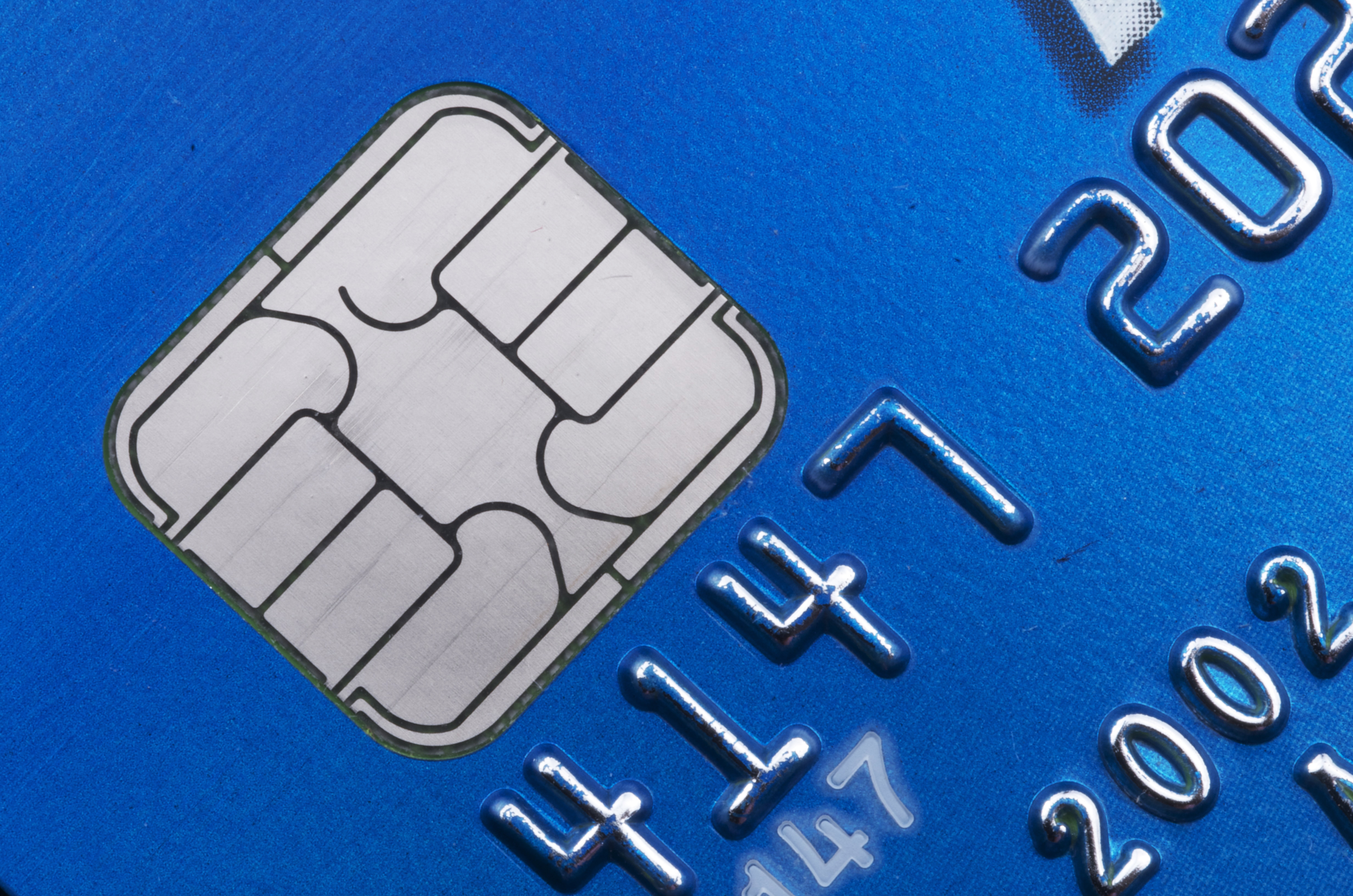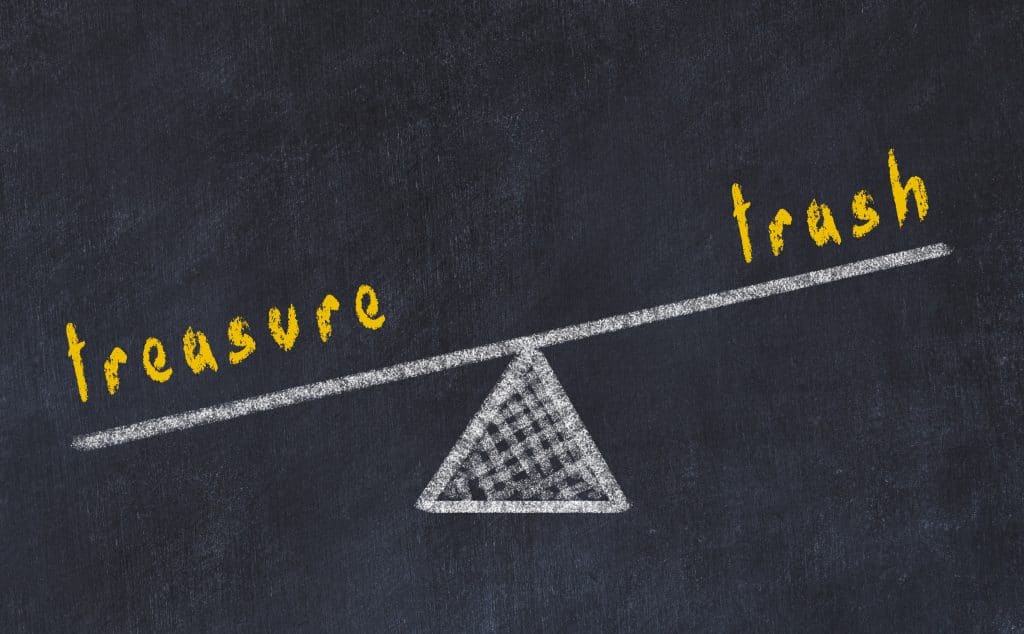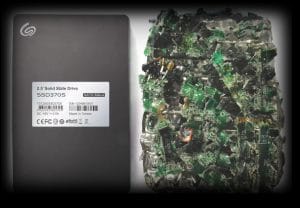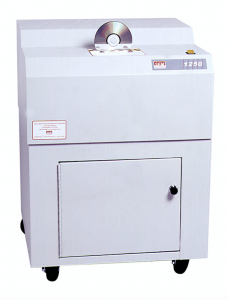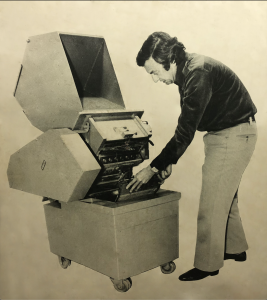 Paper shredding can first be accredited to Abbot Augustus Low of New York, who filed a patent for an improved wastepaper receptacle in 1909, sparking the first idea for a paper shredder. Low’s invention was intended for use in banks and counting houses, but unfortunately was never manufactured.
Paper shredding can first be accredited to Abbot Augustus Low of New York, who filed a patent for an improved wastepaper receptacle in 1909, sparking the first idea for a paper shredder. Low’s invention was intended for use in banks and counting houses, but unfortunately was never manufactured.
The first known mechanical paper shredder actually was created in Germany in 1935. A man, Adolf Ehinger, was inspired by a hand-crank pasta maker to create a machine to shred sensitive material after being questioned about anti-Nazi literature in his garbage. The machine was cranked inside of a wooden frame that was large enough to handle one sheet of paper. Later in the 1940s, he added a motor to power the shredder and sold the shredders to a host of government entities.
During the cold war, Ehinger’s shredder increased in popularity. In 1959, his company, EBA Maschinenfabrik, created the first cross-cut shredder that cut paper into tiny bits for an increased security level. To this day, EBA Maschinenfabrik continues to design and produce shredders under the name of Krug & Priester, who purchased the business in 1998.
Since Ehinger’s invention, shredders have played a role in many important times in history. Before the 1980s, shredders were nearly exclusively used by the government, military, and banking industry. But in 1987, the U.S Supreme Court that ruled that your garbage, once brought to the curb outside, is considered public property. Come the 1990s, statistics proved how corporate and personal identity theft had skyrocketed. Most of the public wasn’t even aware of the existence of paper shredders until they began to surface in connection with scandals such as Watergate in the 1970s, Iran-Contra in the 1980s, and Enron in 2002. The increase in identity theft and scandals caused concern which led to businesses and individuals burning their paper waste. Because it is so detrimental to the environment, this increase in burning led to laws prohibiting the incineration of trash, which had the effect of businesses and regular citizens turning to paper shredders for secure document disposal. Despite the negative stories and unfair reputation from the media about how they are used to cover the tracks of the guilty, Ehinger’s purpose was to protect the innocent. Throughout the 20th century, paper shredders have become more secure by using cross-cut methodology and creating smaller shreds.
Privacy laws such as the Health Insurance Portability & Accountability Act (HIPAA), The Fair and Accurate Credit Transaction Act (FACTA), The Family Educational Right and Privacy Act (FERPA) to name a few, render organizations responsible for protecting customer/consumer information. It’s important for businesses to legally comply with these regulations and it is also a best practice for business to routinely destroy data that has outlived retention periods. Shredding paper opens up many environmentally-friendly disposal alternatives that are better than tossing it all in the dumpster.
In 1968, in what is now known as “The Pueblo Incident”, Navy intelligence vessel USS Pueblo was captured by North Korean patrol boats. According to U.S. reports, the Americans tried their best to destroy all the classified information aboard the ship. Unfortunately, with the volume of material on board it was impossible to destroy it all prior to capture. Korean War Veteran and founder of SEM Leonard Rosen was struck with the idea that there has to be a better way to destroy classified information. Within weeks of hearing this news, he had developed the concept for the world’s first paper disintegrator and the SEM legacy of destruction devices had begun. It’s fascinating that Ehinger and Rosen were both motivated by protecting their countries’ intelligence for the greater good of humanity at the time to produce such ideas.
SEM may have coined the term “disintegrator”, but every device from SEM is always quality. SEM’s high security paper shredders are NSA/CSS listed and reduce waste to particles no larger than 1mmx 5mm. All SEM NSA listed paper shredders meet the requirements of the new CUI security regulation that requires CUI documents to be shredded and meet . The Model 344 paper shredder produces particles of 0.8mm X 2.5mm, which is half the size of the current NSA requirements, for those looking for the highest security. Many of SEM’s paper shredders are factory installed with an automatic oiler, but for those looking to reduce their carbon footprint, the Model 1201CC paper shredder may be what’s necessary. The Model 1201CC was the first high security paper shredder tested oil-free by the NSA and listed on the NSA EPL for classified document destruction. Oil free shredders save money on oil refills and are perfect for the eco-conscious consumer.
Buying a paper shredder is an insurance policy that helps protect sensitive information. Our trash is not “our” trash once it’s outside, and its vital to be conscientious about what is being thrown away. Paper shredders have been around for over 100 years now and will continue to be necessary even as more offices vow to go paperless. Paper will still be around, and SEM has all the Classified and Unclassified paper shredders to meet your media destruction needs.


